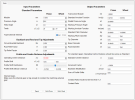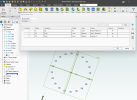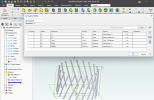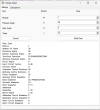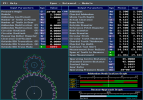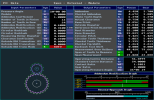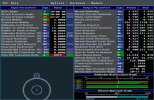@albie0803
Thanks for the screen grab - great infomation - very helpful - here isa screen grab of what my 'new' simple routine would give for the 25 tooth gear:
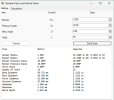
I've also attached the generated Alibre part file.
I also checked the output of my original gear generator against the data from your screen grab. All the major items are in agreement - even the contact ratio.
Where your program wins out is in the detail of the tooth profile data and the measurement infromation.
I'm interested to know more about the Addendum modification and recess-approach graphs - what do these graphs do? I'm guessing the Addendum modification graph indicates when undercutting of pinion (xpUc) and gear (xgUc) will occur - but what are xpPt and xgPt?
Can I ask a favour? Could you provide a screen grab for the following inputs:
Module 3
Pinion 12 teeth, Gear 24 teeth
Pressure angle 20
Addendum modification Pinion 0.6
Addendum modification Gear 0.36
Operating centre distance 56.4999
The above is one of the 'standards' against which I check my calculations; it would be very helpful to have some additional confirmation that I'm on the right track.
Also, does your program work for helical gears?
If so, could you check for the following values:
Normal Module 3
Normal Pressure angle 20
Helix angle 30
Pinion 12 teeth (L), Gear 60 teeth (R)
Addendum modification Pinion 0.09809
Addendum modification Gear 0.0
Operating centre distance 125.0
I'm not sure your program uses this: Centre distance increment factor 0.9744
Again, this is one of the standards I've been using - so confirmation of the calculations would be most welcome.
Thanks..
David
